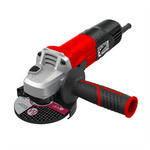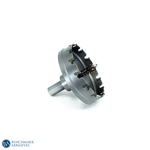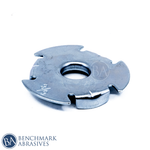
Polishing Compounds Explained: Advantages and Types

Polishing compounds are abrasive compounds made of polishing powder, waxes, and lipids baked into a cake or bar. They are used to smooth metals and gradually create a clean and professional finish in various industries. Polishing or buffing compounds are available for multiple materials and applications. Here is a list of polishing compounds and their uses:
There are three types of polishing compounds, which are further sub-categorized:
- Tripolis: these are called“cutting compounds.” They are used to cut and color most soft metals like copper, brass, aluminum, tin, etc. They eliminate dull scratches and emery marks and leave a smooth surface with a dull finish. It is also applicable to woodworking.
- Intermediates: These compounds help eliminate rough surfaces and give them a glossy finish.
- Finishing Rouges are the burnishing compounds used to deliver high-quality luster to finer material.
Compounds can be utilized independently or in combination at different stages based on the desired finish. For instance, if your workpiece has a rough surface, it will go under Tripoli and then Finishing Rouge to eliminate dullness and give a high-quality finish. If your workpiece doesn’t require a high-quality finish, it will go under Tripoli, intermediate, or both.
Advantages of Polishing Compounds
The use of metal polishing chemicals has several advantages. They restore the metals' original luster, enhance their aesthetic appeal, and possibly prevent further oxidation and tarnish. In sectors where the look of metal is crucial, such as the automotive and aerospace industries, polishing chemicals is crucial to maintaining the quality of metal components.
Types Of Polishing Compounds (Subcategories)
Below are the Subcategories of commonly used polishing compounds:
1. Brown Tripoli
This compound is commonly utilized on soft metals like brass, copper, and aluminum. The brown tripoli can easily eliminate lines or scratches (not too rough) from the surfaces. It can also be applied on wood surfaces and give them a lustrous finish.
2. White Polishing Compound
This polishing compound is mainly used for hard metals like stainless steel and metals like nickel-plated and gives them a brighter shine. It is also an ideal choice for cutting and the intermediate polishing process.
3. Black Polishing Compound
The black polishing compound is the harshest, usually contains emery as an abrasive, and is a great starting point after 180-grit sandpaper. It is ideal for removing deep scratches from platinum and stainless steel. Also used to smooth rough surfaces. It can be used on lap wheels, muslin, sisal, and treated buffs.
4. Blue Polishing Compound
This polishing compound works well on non-ferrous metals or almost any type of metal to give it a smooth final polish. For better results, use it with a buffing wheel.
5. Green Polishing Compound
This intermediate polishing compound is also known for its high-quality, mirror-like finish. As a result, it is mostly used for stainless steel. It is also known as a stainless steel compound. This compound also works for brass and all non-precious metals. You can use it with a muslin buff for scratch removal from 240-grit sandpaper or a loose fold flannel buff for a high-luster finish.
6. Pink Polishing Compound
The pink polishing or dual-purpose compound is used in the initial stage of soft metal and the final stage of hard metal polishing to get extra finishing. It’s one of the most adaptable compounds, as it works on wood, plastic, and painted surfaces.
7. Red Polishing Compound
Red polishing compound is also known as Jeweler’s rouge or red rouge. It gives a high-luster finish to precious metals like gold and silver, which is why it is popular in the jewelry trade. Use it with a 6-inch loose fold buff at about 3000 RPM for best results.
8. Yellow Polishing Compound
This Yellow Rouge is a dry,low-residue polishing compound that gives gold, platinum, stainless steel, and other hard metals a high-gloss finish. It is good to apply after 240 grit to 320 grit sandpaper. Use it with non-treated muslin or felt-stitched buffs running at about 3000 RPM. This compound can be used in brass, silver, and polymer pieces.
Apart from the polishing compounds described above, there are a variety of polishing compounds available depending on the material and application. We hope this will help you select the appropriate polishing compound for your masterpiece.
Safety Tips
Polishing compounds are generally safe to use, but handling them correctly is essential. There are chemicals in some compounds that can be abrasive or powerful. Always work in an area with adequate airflow and wear protective gloves. To ensure safe and effective use, read the safety instructions on the compound container.



































































